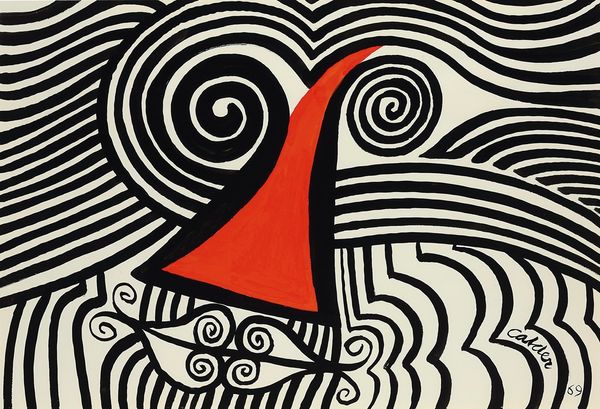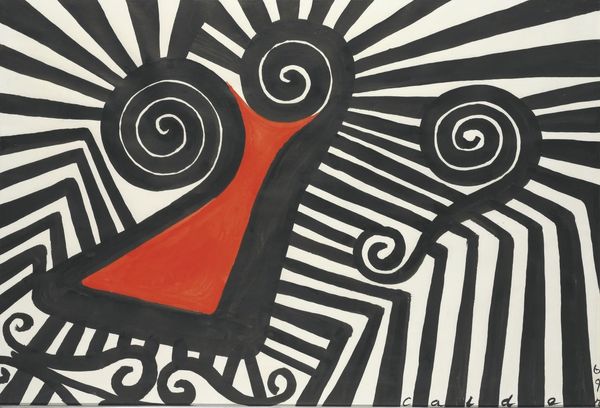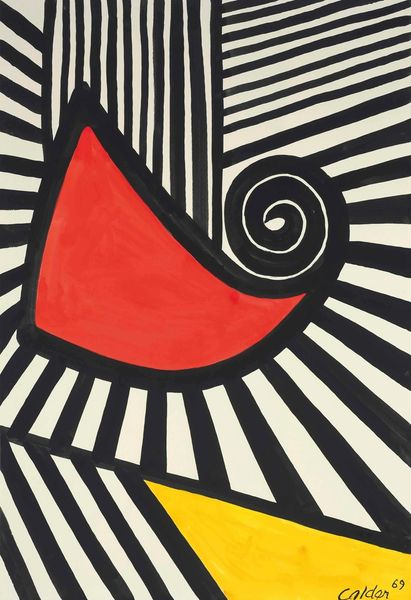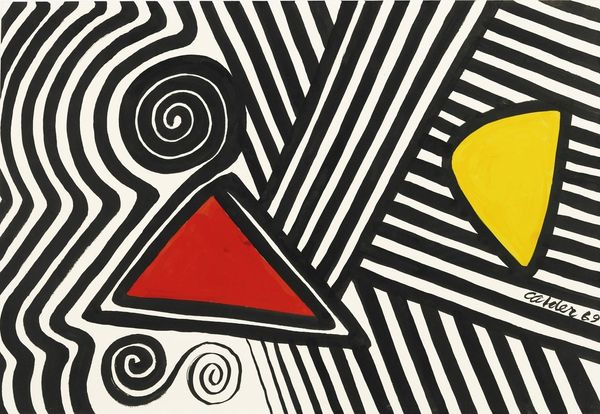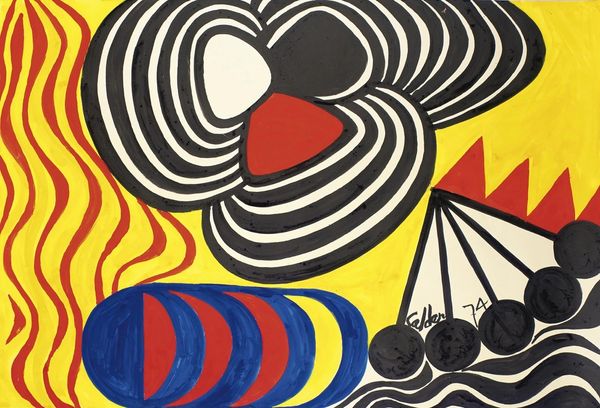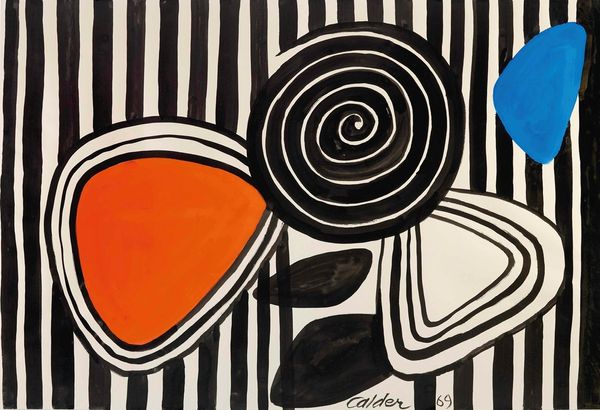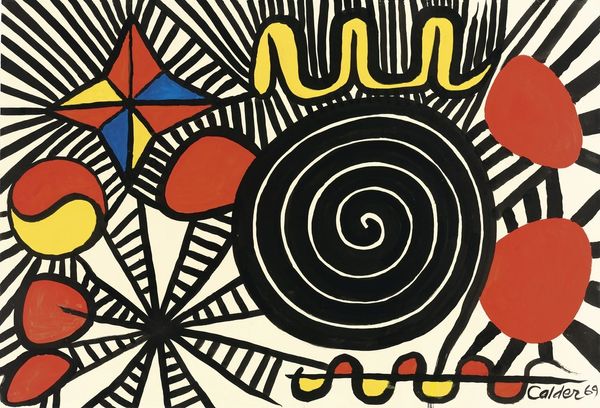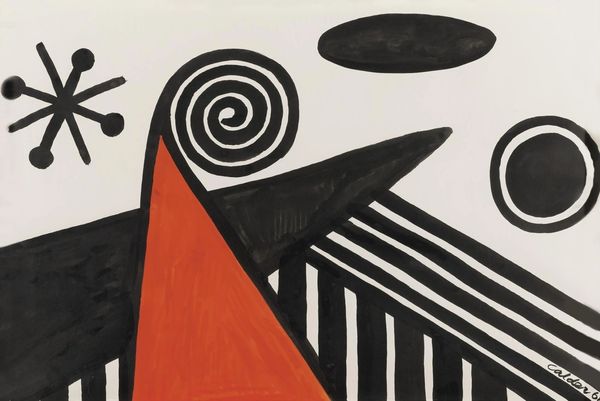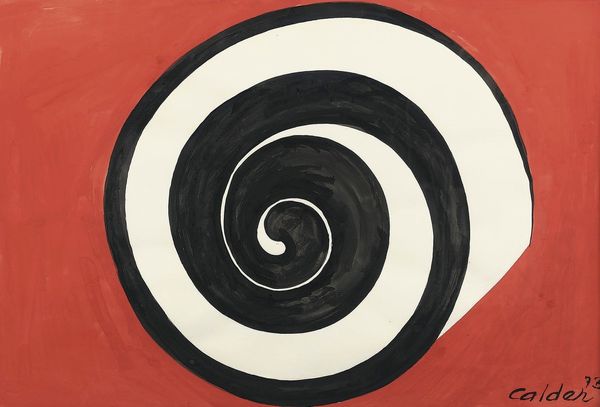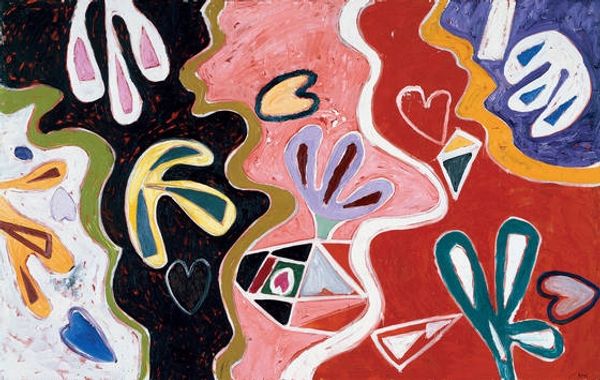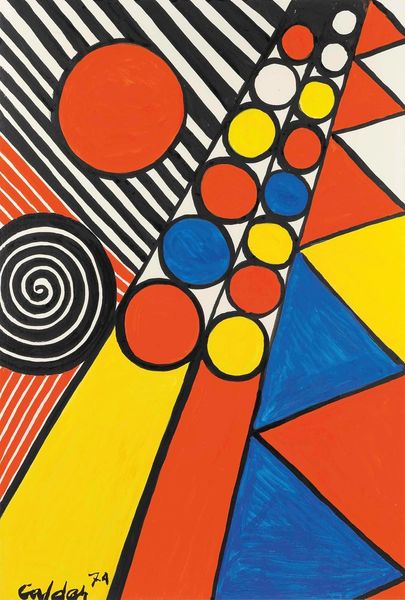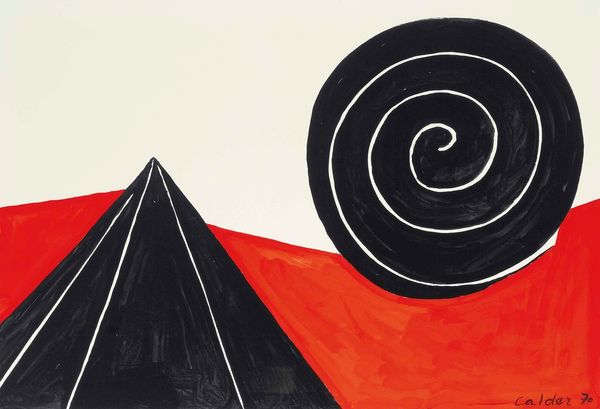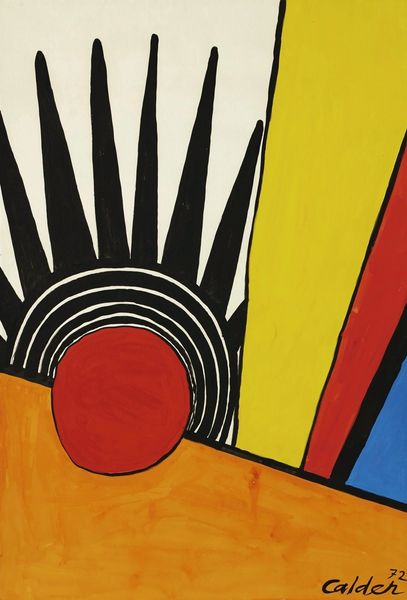
painting
#
random pattern
#
op-art
#
loose pattern
#
painting
#
op art
#
form
#
geometric
#
line
#
modernism
Copyright: Modern Artists: Artvee
Editor: Here we have Alexander Calder's "Slanting Red Nose," created in 1969. It is very striking with the high-contrast lines. The bright red really pops. What stands out to you when you look at this work? Curator: What interests me immediately is how Calder, primarily known for his sculptures and mobiles, engages with the flatness of painting here. It's not just an image; it's an object made through a specific, material process. Look at the thickness of the black lines, likely applied with a brush. Can you imagine the physical act of creating those repeated lines? The materiality isn't trying to hide, is it? Editor: I hadn’t thought about that – seeing his process laid bare like that. I guess I’m used to thinking of painting as illusionistic. But those imperfect lines almost look industrial. Is that on purpose? Curator: Precisely! Think about the cultural context of 1969. There’s a tension here, between handcraft and mechanical reproduction, questioning where 'art' truly resides. What impact would these repetitive patterns have on consumer culture? Editor: So, is he pushing back against mass production, or celebrating the new materials of the time? It’s a bit ambiguous to me. Curator: Maybe it's both? He seems to explore new ways for the painting itself to "perform" through bold, geometric shapes. Do you notice the texture from the paint or is it mostly obscured? Consider also, what is your relationship to the artwork, the space in which it resides? Is this an equitable and safe space for yourself, other people, and this piece of art? Editor: That's fascinating. Thinking about his materials and the process does give a different meaning to what otherwise looks like a simple image. Curator: Exactly. By considering the "how" and "why" of its making, we can see it also becomes commentary about larger questions surrounding art production and cultural value during that time period.
Comments
No comments
Be the first to comment and join the conversation on the ultimate creative platform.
